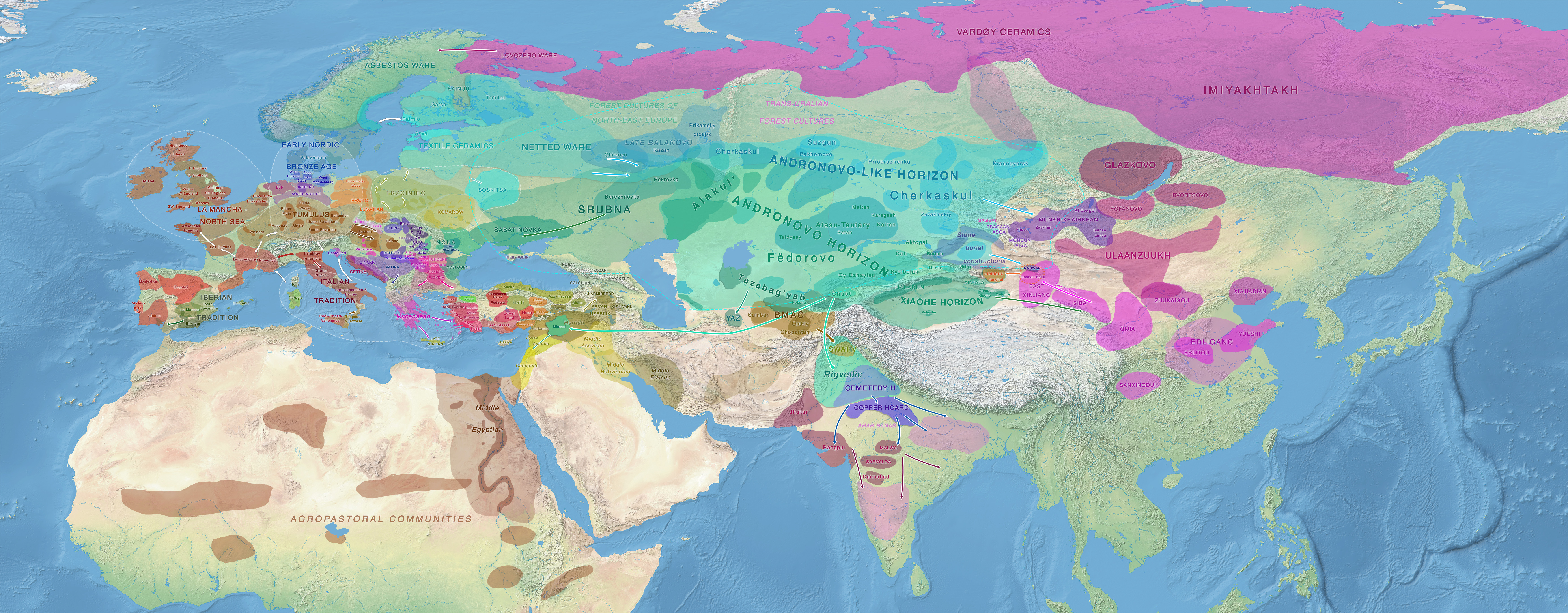This is from 2000BC and why are you ignoring all the i2a found in mokrin (4x) which looked to carry elite items but bringing up the 1 j2b?
Anyway, what does mokrin being mostly i2a and r1b have to do with j2b l283 being found (10+) in croatia and italy + north africa but never alongside any r1b? Doesnt this mean the j2b l283 wiped out the mokrin r1b/i2a in those regions or was pushed back by the mokrin r1b/i2a to the coast?
The Maros group was pushed South and West by groups coming from different directions (South, North and East). Eventually that area of the Maros group was nearly completely taken by G?va related formations dominated by E-V13. It seems J-L283 did just better than the haplogroups found in Maros and might have been present, even at that time, in other yet unsampled group.
We have a later case of J-L283 alongside Bell Beaker derived/Tumulus culture R-L2, in Novo Mesto, in the strongly Illyrian influenced Hallstatt Unterkrainische Gruppe. Hat was the area (around Slovenia), where the contact between R-L2 and J-L283 was particularly intensive. From there many innovations spread along the Adriatic coast and inland, being apparently spread by J-L283 carriers.
This map is of key importance to understand what happened:

https://indo-european.eu/wp-content/uploads/2021/05/13-bronze-age-middle.jpg
The purple group in very Eastern Hungary and Romania, with a centre along the Tisza-K?r?s rivers, down to Northern Serbia, were people mostly cremating, from which G?va and Channelled ware developed (especially Berkesz-Demecser and Suciu de Sus, Igrita, Cehalut). Its from these groups E-V13 spread in the LBA to the Balkans.
At the same time the Tumulus culture and later Middle Danubian Urnfielders came from the Upper Danube-Alpine zone into Pannonia and the Balkans. They were R1b, especially R-L2 dominated.
This means there were two big pushes, one from the North West (R-L2/TC/UF) and the other from the North/North East (E-V13/G?va). J-L283 is likely to have started in the direct neighbourhood and under strong pressure of R-L2, from which they got a lot of cultural influences and innovations though. With these they pushed South, along the Adriatic, but also inland - this is the foundation of the Illyrians.
The only remaining issue I have is with the relationship of Cetina with Posu?je. Cetina would have the ideal position, but we had these debates that Posu?je shows a lack of continuity with Cetina. One theory goes that the Posu?je/Dinaric group comes from the Castellieri group, you have them all on the map. One open question is also whether Castelliere had Italian influences.
In any case, these three group, Castellieri, Posu?je and Cetina, are what we have to look at very carefully. They all were at the Adriatic with contacts to Italy, they all had contacts to the R1b-Bell Beaker derived groups/Tumulus culture and they all being interconnected. As far as I understood, Posu?je is a proven case. Question is if going one step back, do we end with Castellieri and/or Cetina? Going back two steps - end we up to the East (Maros?) or West (Italy) or something even older in place of these three later groups.
There are some gaps in the archaeological research:
From a chronological perspective, more attention has been paid within the research history to earlier or later cultures of the same area, such as the Early Bronze Age1 Cetina Culture (ca. 2300?1850 BCE), with its typical burial mounds, bronzes and richly decorated vessels,2 or to the Iron Age cultures, with a major part of the overall knowledge relying on comparisons to hillforts and necropoleis in the Northern Dalmatia area, which have been studied in more detail, as well as a few pottery studies.3 The in-between period (about 1850?900 BCE) is still, in a number of ways, an unwritten page in the Bronze Age history of the area.
Some handle types, such as vertical handles with a plate in the upper joint (Fig. 4.23) or those with a triangular front (Fig. 2.2,4 and Fig. 3.11,18,19), are clearly models belonging to the Istrian Castellieri Culture.29 Some other models, such as pierced handles with twisted margins (Fig. 4.30?31) or spiral-shaped excised motifs (Fig. 4.32?33), are completely unrelated to the eastern Adriatic pottery variability, being instead typical elements of the Italian so-called Apennine Culture.30
Moreover, the similarity between some pots from Vranjic and some pots from Trinitapoli in Northern Apulia31 serves as the iconic representation of the intensity of trans-Adriatic contacts in this period (Fig. 5).32
Regarding the Bronze Age phase analysed here, some elements can be highlighted: A) The presence at the site of clearly Istrian models (such as vertical handles with plate in the upper joint and vertical handles with a triangular front). B) The presence of clearly Appennine-like models, such as spiral-shaped excised decorations and pierced handles with twisted margins. C) The quantity and quality of comparisons that ? starting from Vranjic ? can be established with the Istrian Castellieri Culture to the north and with Northern Apulia to the west (mainly concerning ovoid and globular tankards/pitchers).
https://www.academia.edu/44948137/V..._the_Middle_Bronze_Age_19th_14th_century_BCE_
The situation was different in the hinterland, but this needs to be investigated in detail. In any case, from my point of view, only a North West -> South East movement makes sense for J-L283 and the Illyrians. Coming from contacts with Italy and the Alpine zone.
Might be disproven at some point, but I don't see contradictory evidence right now.


